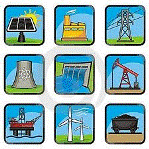Department of Agricultural Economics: Undergraduate Research

Op-Eds from ENSC230 Energy and the Environment: Economics and Policies
Date of this Version
Fall 12-12-2015
Document Type
Editorial
Citation
Op-ed from ENSC 230. Energy and the Environment: Economics and Policy, University of Nebraska-Lincoln, Department of Agricultural Economics, Fall 2015
Abstract
There is no doubt that global warming is happening. With all the rage about climate change and global warming people should be doing more about it than just reading about it in the news. We should be making efforts towards making changes on a local level. This in turn could grow to a national level with more and more people participating in the movement and actually make global changes, instead of just talking about it. When the scale of participants grows the scale of the changes made will grow as well and this will be the beginning of the changes that could slow down climate change. Scientists have proven that humans are the main cause of the global warming issues at hand. Humans are emitting too much carbon dioxide (CO2) into our atmosphere in many ways. Some of these ways consist of construction, driving vehicles, and digging up fossil fuels. The trees and plants are being destroyed and the plants and trees are a few of the main things that take the CO2 out of the atmosphere. Humans are producing a double negative for the planet, by creating more toxins (CO2) and taking away the things to reduce the toxic chemicals in the atmosphere (trees, plants, etc.). Creating walkable communities could benefit everyone. These are communities in which the necessities for individuals living in the area are within walking or biking distance. Or within distances where vehicles are not necessary. Driving would not be needed as much, which would cut down the use of gasoline and ethanol. This would cut down the CO2 emissions and that helps slow down global warming and climate change. Walkable communities would create more space for trees, plants, and animals by creating more green space instead of adding more roads and that would reduce the carbon that has already been emitted into the air. It would also bring aesthetic value to the communities and they would no longer be covered by cement and buildings. Walkable communities make getting places more efficient as well, things would have to be built closer together, but once this was done walking everywhere would not be such a burden. We could walk to the grocery store, kids could walk to schools, and there could be community centers within walking distances for the people of the area to attend meetings or events.
Included in
Environmental Indicators and Impact Assessment Commons, Natural Resources and Conservation Commons, Oil, Gas, and Energy Commons


Comments
Copyright 2015, Katie Zuehlke. Used by permission